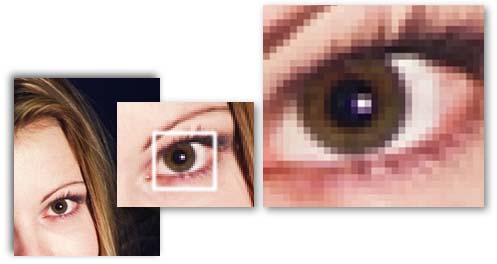|
How it Works: Digital Compression
Since the video signal has to be
"digitized" before it can be "compressed," let's start
with an explanation of how we make a digital picture.
How digital pictures are made:
- The analog picture is divided into
thousands of picture elements (pixels)
- Each pixel is given a digital code to
identify the color and placement

In the illustration above, the analog
picture is electronically scanned and divided into small squares called
picture elements, or "pixels." A typical picture would be
divided into at least 300,000 of these pixels. Each pixel is then given a
digital code which identifies its placement on the grid, its color and
light intensity. For example, the digital code 1110011 might identify that
particular pixel as four squares from the left hand edge, three squares up
from the bottom, red in color and of medium brightness. When the picture
has been completely scanned and converted into a digital format, it can
then be represented by a huge string of ones and zeros. To give you an
idea of the size of this string, consider this: it typically requires a
series of at least eight digits (ones and zeros) to represent one pixel. A
picture with 300,000 pixels would then require 2,400,000 digital bits, or
2.4 megabits to represent it.
This is a lot of data, especially when you
consider that television pictures are transmitted at a rate of 60
individual pictures or "frames" per second, this would require
140,000,000 digital bits for one second of video.
However, as the illustration above shows,
much of the information from frame to frame is the same, so ..... by
comparing the pixels in each frame and sending a simplified
"ditto" command for the unchanged pixels, it was determined that
it was possible to reduce the amount of data needed to send a top quality
picture by as much as 90 percent with no loss in quality. What this would
mean then is that up to 10 or more channels of compressed video could be
sent in the same amount of bandwidth as normally required for only one
channel. This technology was a major breakthrough for the cable industry.
The effect of compression technology was to expand a cable network's
channel capacity from say 60 channels to 600 channels, without rebuilding
the network.
|


